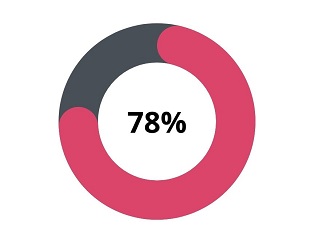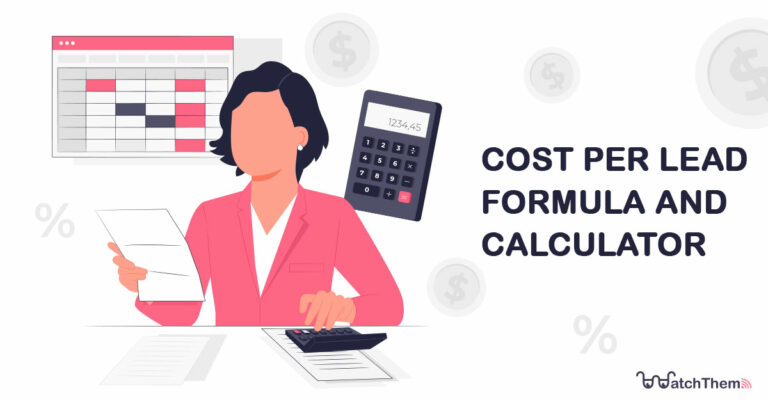Page Contents
Cost per lead (CPL) is one of the most important eCommerce metrics for measuring marketing effectiveness. Calculating cost per lead helps you keep track of your marketing spending, manage your budget, and make better marketing decisions.
In this blog post, we’ll discuss what cost per lead is and how to calculate it. We also give you some tips on how to reduce your CPL. So, let’s jump in.
What Is Cost Per Lead?
Cost per lead is the total amount of money you spend to generate one lead. This metric enables marketers to understand how they are spending money on different lead generation channels and services.
These are some of the costs businesses pay to generate leads:
- Social media advertising costs
- Outbound sales costs
- Costs for hiring lead generation agencies
- Costs for creating a marketing campaign
- Customer incentive programs costs
The lower your CPL, the more effective your marketing efforts have been. If you have a higher cost per lead than other businesses in your industry, you might want to reconsider your lead generation strategies.
How to Calculate Cost Per Lead?
The cost per lead formula is simple. To calculate your CPL, you have to divide your whole marketing expenses during a specific period by the total number of leads you have generated in that same period.


It seems straightforward, but it’s keeping a record of your spending that can make things complicated. You have to know the amount of money you have spent on each lead generation channel like email marketing and social media platforms. Moreover, you need to calculate the cost per lead for all of them separately to figure out how to adjust your budget. And don’t forget your spending includes your third-party expenses, employee costs, etc.
Also, it’s necessary to identify the sources of your leads. Knowing how many leads are coming from each source helps you make better decisions about allocating your marketing budget.
Now, are you thinking about how you can keep track of all your costs and make sure you are calculating your CPL accurately? No need to worry! Here’s where a cost per lead calculator comes in handy.
How to Reduce Your Cost Per Lead?
If you are looking for ways to reduce your cost per lead, here are some helpful tips:
1- Improve Ad Relevance
If your ads don’t resonate with your target audience, you will have a higher cost per lead. By improving the relevance of your ads, they will capture more attention and receive more clicks. But how can you make your ads more relevant?
First, your keywords must relate to your ads, like the example below, which is an ad for the keyword “email marketing software.” The exact keyword appears in the headline.


Try to use more specific keywords that better reflect what your audience is looking for.
The relevance of your ad also depends on how much your landing page relates to it. Remember to test and optimize your landing page and make your offer clear above the fold so people would see it immediately.
2- Use Behavioral Targeting
Behavioral targeting allows you to display your ads to people who are probably more interested in them. You can use Google Ads to target your ads to users who search for keywords related to your business. These people are more likely to click on your ad and convert to paying customers. Businesses experience revenue growth 78% of the time by using behavioral marketing strategies.


Another way to use this advertising technique is by retargeting the visitors who come to your website and encouraging them to convert. You don’t need to retarget all the users who visit your website. Instead, segment them based on their behavior on your website. Then, retarget the ones who seemed more interested in your product or service.
But how can you understand your website users’ behavior?
Using a website visitor tracking tool like Watch Them Live can help you monitor users’ interactions on your website. With this tool’s website analytics and user session replay features, you can track and analyze each visitors’ behavior on your website. The information enables you to differentiate between the behavior of users who are more likely to convert and those who ignore you. Then, you can optimize your ads based on this data.
Want to try out Watch Them Live to see how people are interacting with your website? Sign up now and get your free trial!
3- Conduct A/B Testing
An excellent way to increase your conversion rate and reduce your CPL is running two ads at the same time to perform A/B testing. This strategy lets you analyze and compare the performance of the two ads to find out what elements improve your conversion rate.
4- Create Relevant Content
Another great conversion marketing strategy is producing relevant content. Your visitors will be more encouraged to convert if you provide them with content that matters to them.
The information you have collected by tracking user behavior can help you find out what interests your audience. Then, you can share more personalized content with them to increase their engagement with your business.
Conclusion
Cost per lead is a key marketing metric that helps marketers understand how to minimize their costs. Knowing how much each lead costs you, allows you to organize your marketing efforts more effectively.
In this article, we showed you how to calculate your cost per lead and offered you some tips on how you can lower it. And if you are looking for a way to calculate your CPL easily without missing any data, you can use a cost per lead calculator.

